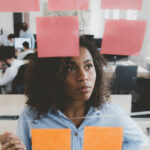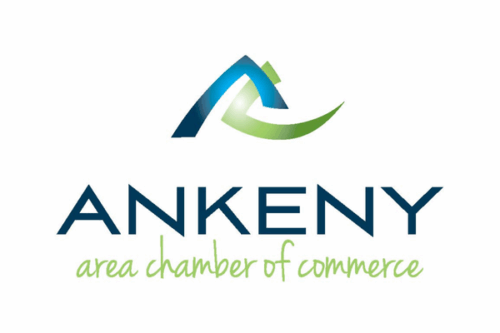Implementing a Learning Management System (LMS) can be a transformative step for professional and trade associations, offering a centralized platform to deliver educational content, engage members, and support their professional growth.
However, to truly maximize the potential of an LMS, it’s crucial to go beyond simply installing the software.
Following best practices ensures that your LMS not only meets the immediate needs of your members but also evolves with your organization’s goals.
This guide explores key strategies and best practices for making the most of your LMS, from gaining stakeholder buy-in and setting clear goals to optimizing user engagement and integrating with other essential systems.
Whether you’re just starting your LMS journey or looking to enhance an existing platform, these insights will help you create a dynamic, member-focused learning environment that drives value and fosters a strong connection with your association.
Stakeholder Buy-In: The Foundation of Your LMS Success
Implementing a new learning management system is a significant step that can transform how your organization learns and grows. But without the support of key stakeholders, even the most advanced LMS can fall short of its potential.
Why Stakeholder Buy-In Matters
Getting buy-in from leaders, managers, and influencers within your organization ensures that the LMS is not just another tool but a valued asset embraced by everyone. Stakeholders can champion the LMS, driving enthusiasm and adoption across teams. Their support helps in:
- Allocating Resources Effectively: Stakeholders can ensure the LMS gets the necessary funding and personnel.
- Facilitating Smooth Implementation: With their backing, overcoming obstacles becomes easier.
- Aligning the LMS with Organizational Goals: They help tailor the LMS to meet specific strategic objectives.
Strategies to Secure Stakeholder Commitment
Securing stakeholder commitment is essential for the successful implementation of your LMS.
Present your vision for the LMS: A good starting point is to communicate the vision clearly by highlighting how the LMS will address existing challenges, improve efficiency, and contribute to the organization’s success. Use real-life examples, such as success stories or case studies from similar organizations, to illustrate the potential benefits and make the vision more tangible.
Involve stakeholders early in the process: Invite them to participate in the selection and planning stages, allowing them to share their input and feel invested in the project. Be proactive in addressing concerns by listening to feedback and making adjustments as needed, which shows that their opinions are valued and considered.
Demonstrating the return on investment (ROI): Present data and projections that outline expected outcomes, such as increased productivity or cost savings, and set measurable goals with clear key performance indicators (KPIs) to track the LMS’s impact over time. This approach helps stakeholders see the tangible benefits of the LMS and justifies their support.
Offering training and support: Provide hands-on demonstrations so stakeholders can experience the LMS firsthand and understand its capabilities. Ensure ongoing assistance is available to address any questions or issues, making the transition smoother and building confidence in the system.
Maintain open communication: A key to sustaining stakeholder commitment. Keep them informed with regular updates on implementation progress and milestones, and establish feedback channels to allow continuous input and dialogue. This ongoing partnership not only secures initial buy-in but also cultivates a collaborative environment where learning and development can thrive.
Clear Goals and KPIs: Navigating Your LMS for Member Success
Implementing a learning management system without clear objectives is like embarking on a journey without a map. For associations, setting specific goals and KPIs ensures your LMS delivers real value to your members.
The Importance of Clear Goals
Defining precise goals helps align your LMS with your organization’s mission to serve and engage your membership. It enables you to focus on what matters most to your members, measure success effectively, and demonstrate the LMS’s impact on their professional development.
Defining Effective LMS Goals
Start by understanding your members’ needs. Engage with them through surveys or feedback sessions to identify the educational content they’re seeking.
Use these insights to set goals that are specific, measurable, relevant, and time-bound. For example, you might aim to increase member participation in online courses by 25% over the next year.
Establishing Key Performance Indicators (KPIs)
KPIs help you track progress toward your goals. Consider monitoring metrics such as member engagement levels, course completion rates, and satisfaction scores for your educational offerings.
Monitoring KPIs allows you to gauge the effectiveness of your LMS and make data-driven decisions. Here are some KPIs relevant to member-based organizations:
- Member Engagement Levels
- Login Frequency: How often are members accessing the LMS?
- Active User Percentage: What portion of your membership is using the platform regularly?
- Course Completion Rates
- Overall Completion Rate: Percentage of members who finish courses they start.
- Time to Completion: Average time members take to complete a course.
- Content Effectiveness
- Assessment Scores: How well are members performing on quizzes and evaluations?
- Feedback Ratings: Member satisfaction scores for courses and resources.
- Membership Growth and Retention
- New Memberships Attributed to LMS: Number of new members joining because of LMS offerings.
- Renewal Rates: Increase in renewals linked to LMS engagement.
- Continuing Education Credits Awarded
- Credits Earned: Total number of professional development credits members earn through the LMS.
Regular Review and Adaptation
Periodically assess your LMS’s performance against your KPIs. Be prepared to adjust your goals and strategies based on what the data reveals and the evolving needs of your members. This flexibility ensures your LMS remains a relevant and valuable resource.
By setting clear goals and KPIs tailored to your members, you transform your LMS into a powerful tool that enhances their professional growth and strengthens their connection to your organization.
With a focused approach, your LMS will not only meet but exceed member expectations, solidifying your role as a leader in providing meaningful educational opportunities.
User Training and Support: Empowering Members to Maximize Your LMS
Implementing a new learning management system is a significant step for professional and trade associations. To ensure your members reap the full benefits, providing comprehensive user training and ongoing support is crucial.
Even the most advanced LMS can fall short if members aren’t comfortable using it. Effective training helps members:
- Navigate the Platform Confidently: Understanding how to access courses, resources, and features enhances their experience.
- Engage More Deeply: Familiarity with the LMS encourages regular use and participation.
- Achieve Better Outcomes: Well-trained members can fully leverage the LMS for their professional development.
Strategies for Effective Training
Effective training is essential to ensure that your members can fully utilize your LMS and engage with its offerings. A well-executed training strategy not only boosts confidence in using the platform but also enhances overall member satisfaction and participation.
1. Offer Introductory Tutorials
Effective training begins with offering introductory tutorials that familiarize members with the LMS. Short video walkthroughs can demonstrate key functionalities in an engaging and accessible manner, allowing members to visually learn how to navigate the platform.
Complementing videos with interactive guides that provide step-by-step instructions within the LMS helps users explore features at their own pace, building confidence and proficiency.
2. Host Live Webinars
Hosting live webinars is another powerful training strategy. These real-time sessions enable members to ask questions directly, fostering a more interactive and personalized learning experience.
Webinars can also highlight new or underutilized features, encouraging members to fully leverage the LMS’s capabilities and stay updated with the latest enhancements.
3. Develop a Resource Library
Developing a comprehensive resource library provides ongoing support and empowers members to troubleshoot independently. Including a well-organized FAQ section addresses common questions and offers quick solutions to typical issues.
Providing downloadable user manuals gives members a handy reference they can consult anytime, enhancing their ability to navigate the LMS effectively without immediate assistance.
4. Providing Ongoing Support
Member needs may evolve over time, so continuous support is essential.
- Dedicated Support Channels: Establish an email address or helpdesk specifically for LMS inquiries.
- Community Forums: Encourage members to share tips and help each other.
- Feedback Mechanisms: Implement forms or surveys to gather input on user experience.
5. Personalizing the Experience
Consider segmenting training based on member roles or interests.
- Customized Content Paths: Tailor learning journeys for different professional levels.
- Language Options: If applicable, offer materials in multiple languages to accommodate a diverse membership.
By investing in comprehensive training and robust support, you empower your members to make the most of your LMS. This not only enhances their professional growth but also strengthens their connection to your organization.
Integration with Other Systems: Creating a Seamless Experience for Your Members
An LMS that operates in isolation can limit its effectiveness. Integrating your LMS with other key systems within your organization, such as your membership CRM, creates a cohesive and efficient user experience that benefits your members and your association alike.
Integrating your LMS with other systems streamlines data management and enhances the overall functionality of your technology ecosystem. For instance, syncing your LMS with your CRM allows you to track member activity, preferences, and learning progress in one place.
This not only provides valuable insights into member engagement but also enables you to tailor content and communications to better meet their needs. Integration also reduces administrative burdens by automating processes such as user enrollment and data entry, freeing up valuable time for your staff to focus on higher-value tasks.
Enhancing Member Experience
A well-integrated LMS offers members a seamless and intuitive experience. When systems are connected, members can enjoy single sign-on capabilities, allowing them to access learning resources without the hassle of multiple logins.
Integration with your association’s event management tools can further enrich the member experience by linking LMS courses with live events, webinars, or workshops, creating a more holistic approach to professional development.
This interconnectedness not only boosts engagement but also reinforces your association’s value by providing members with a unified platform for all their learning and networking needs.
Scalability and Future-Proofing
As your association grows and evolves, having an integrated LMS ensures your technology can scale with you. By connecting your LMS with other critical systems, you build a flexible infrastructure that can adapt to changing member expectations and technological advancements.
Whether it’s incorporating new tools, expanding course offerings, or responding to shifts in industry standards, integration keeps your LMS relevant and robust, ensuring it continues to serve your members effectively well into the future.
Customization and Branding: Personalizing Your LMS for Member Engagement
For associations, an LMS that reflects your organization’s unique identity can significantly enhance member engagement and satisfaction.
Customization and branding are not just about aesthetics; they are about creating a familiar and cohesive learning environment that resonates with your members and reinforces your association’s values and mission.
The Power of Customization
Customization allows you to tailor the LMS to meet the specific needs and preferences of your members. From personalized dashboards to role-based content recommendations, customization can make the learning experience more relevant and accessible.
By offering customized learning paths, you can guide members through content that aligns with their professional development goals, ensuring they find the resources that are most valuable to them. This level of personalization not only improves the member experience but also increases the likelihood of continued engagement with the LMS.
Branding Your LMS
Branding your LMS with your association’s logos, colors, and style elements creates a seamless extension of your organization’s online presence. A branded LMS feels like a natural part of your association’s offerings, helping to build trust and familiarity.
When members log in, they should immediately recognize the LMS as an extension of your association, not as a separate, disconnected tool. This consistency reinforces your brand’s identity and strengthens the connection members feel with your organization.
Mobile Accessibility: Learning On-the-Go for Modern Members
In today’s fast-paced world, members of professional and trade associations expect to access learning resources anytime, anywhere. Ensuring that your learning management system is optimized for mobile devices is not just a nice-to-have—it’s essential. Mobile accessibility expands your reach and allows members to engage with content on their terms, enhancing the value of your LMS.
Why Mobile Accessibility Matters for an LMS
Members are increasingly relying on smartphones and tablets to manage their professional development alongside their busy lives. A mobile-friendly LMS allows them to fit learning into their schedules, whether it’s during a commute, between meetings, or from the comfort of their home.
By providing this flexibility, you make it easier for members to stay engaged with your content, leading to higher participation rates and greater satisfaction with your association’s offerings.
Optimizing Your LMS for Mobile Use
To truly capitalize on mobile accessibility, your LMS should offer a responsive design that adapts to various screen sizes and orientations. Navigation should be intuitive, with easy-to-tap buttons and clear menus that make it simple for members to find what they need quickly.
Mobile-friendly content formats, such as short videos, podcasts, and bite-sized reading materials, can enhance the learning experience on smaller screens. Additionally, features like offline access can empower members to download materials and continue learning without needing an internet connection.
User Engagement Strategies: Keeping Members Active and Invested in Your LMS
For professional and trade associations, an LMS that merely provides content isn’t enough; it must also engage members and encourage continuous learning. Implementing user engagement strategies is key to ensuring your LMS remains a vibrant, interactive resource that keeps members coming back.
The Importance of Engaging Content
To capture and maintain member interest, the content in your LMS should be diverse, relevant, and interactive. Incorporating a variety of formats—such as videos, quizzes, discussion forums, and interactive modules—can cater to different learning preferences and make the experience more dynamic.
Content that is directly aligned with members’ professional needs and industry trends will resonate more deeply, making them more likely to participate actively and recommend the LMS to their peers.
Incorporating Gamification and Social Learning
Gamification elements can significantly boost engagement within your LMS by adding motivation and a sense of competition. Features such as badges, points, leaderboards, and certificates make learning more enjoyable and rewarding, providing members with tangible recognition for their efforts and fostering a sense of achievement.
To further enhance engagement, consider integrating social learning features that encourage collaboration and interaction among members. Options include:
- Peer Reviews: Allow members to provide feedback on each other’s work, promoting deeper learning and reflection.
- Group Projects: Facilitate teamwork and practical application of skills, fostering a collaborative environment.
- Community Discussion Boards: Create spaces for members to connect, share insights, and discuss course materials.
These elements not only enrich the learning experience but also help build a sense of community, making your LMS a more valuable resource for your members.
Personalizing the Learning Experience
Personalization is another powerful strategy for driving engagement. Allow members to set their own learning paths based on their interests, roles, or career goals. Use data analytics to recommend courses or resources tailored to their past activity or expressed preferences.
This approach not only makes the LMS feel more relevant to each member but also helps them see a clear pathway for their professional development, which can boost both initial engagement and long-term commitment.
Continuous Evaluation and Improvement: Keeping Your LMS Relevant and Effective
For professional and trade associations, an LMS should be a living, evolving resource that adapts to the changing needs of your members. Continuous evaluation and improvement of your LMS are crucial for maintaining its relevance and effectiveness, ensuring it remains a valuable tool for member engagement and professional development.
Assess Your LMS Usage Regularly
To keep your LMS aligned with your organization’s goals and your members’ expectations, regular assessment is essential. This process involves reviewing the performance of the LMS through analytics and member feedback to identify what’s working well and where improvements are needed.
Tracking metrics such as course completion rates, member satisfaction scores, and engagement levels can provide insights into how effectively the LMS is meeting its objectives.
By understanding these trends, you can make informed decisions about where to adjust content, features, or user experience.
Gathering and Acting on Member Feedback
Member feedback is a powerful tool for continuous improvement. Implementing simple feedback mechanisms, such as post-course surveys or suggestion boxes within the LMS, allows you to capture members’ thoughts on their learning experience.
Pay close attention to their suggestions, complaints, and ideas for new content or features. This feedback loop not only helps you identify areas for enhancement but also demonstrates to members that their input is valued, which can increase their engagement and satisfaction.
Adapting to Evolving Needs
The landscape of professional development is constantly evolving, and your LMS should keep pace with these changes. Stay updated with industry trends and emerging learning technologies to ensure your LMS remains a cutting-edge resource.
Regularly refresh content to include new topics, update outdated information, and introduce innovative learning formats, such as microlearning or virtual reality simulations, where appropriate.
Being proactive about updates and improvements keeps your LMS relevant and ensures it continues to provide high value to your members.
Content Strategy: Crafting Meaningful Learning Experiences for Your Members
The success of your learning management system hinges on the quality and relevance of the content you provide. A well-defined content strategy ensures that your LMS offers valuable, engaging, and purposeful learning experiences that align with your members’ professional needs and your organization’s mission.
Understanding Your Audience’s Needs
A successful content strategy begins with a deep understanding of your members. Regularly gather insights through surveys, focus groups, and data analysis to identify the topics and skills that matter most to them.
By knowing your audience’s preferences, pain points, and career aspirations, you can tailor your content to address their specific needs. This targeted approach not only enhances member satisfaction but also increases the likelihood of ongoing engagement with your LMS.
Aligning Content with Organizational Goals
Your LMS content should also reflect the broader goals of your association, whether that’s promoting industry standards, enhancing member competencies, or supporting certification programs.
Establish clear objectives for your content, such as improving member retention, driving participation in association events, or expanding your reach to new demographics.
Aligning content with these goals ensures that your LMS supports both your members’ professional growth and your association’s strategic initiatives.
Diverse and Dynamic Content Formats
To keep members engaged, offer a mix of content formats that cater to different learning styles and preferences. This might include:
- Videos: Deliver engaging visual content that helps members understand complex topics quickly and effectively.
- Podcasts: Provide on-the-go learning opportunities through audio content, perfect for busy professionals who prefer listening.
- Articles: Offer in-depth written resources that allow members to explore topics at their own pace and revisit key information.
- Interactive Quizzes: Test knowledge and reinforce learning by providing immediate feedback, making the content more memorable.
- Case Studies: Present real-world examples and practical applications that help members connect theory to practice within their industry.
Incorporate a balance of foundational knowledge and advanced topics to cater to both new and seasoned members. Additionally, keep your content fresh by regularly updating existing materials and introducing new topics that reflect the latest industry trends and innovations.
Measuring Content Effectiveness
Regularly evaluate the performance of your content using analytics and member feedback. Track metrics such as:
- Content Completion Rates: Measure how often members finish the courses they start, indicating the effectiveness and engagement level of your LMS content.
- Member Satisfaction Scores: Gauge how satisfied members are with the learning experience, helping to identify areas for improvement and highlight what’s working well.
- Impact on Professional Development Outcomes: Assess how courses contribute to members’ career growth and skill advancement, demonstrating the value of your LMS offerings.
Use these insights to refine your content strategy, removing or updating materials that are underperforming and expanding on successful topics. This continuous improvement approach ensures that your LMS remains a valuable, evolving resource that meets the needs of your members.
Support for Different Learning Styles: Catering to Every Member’s Learning Preferences
A one-size-fits-all approach to learning doesn’t always meet the diverse needs of your members. Supporting different learning styles within your learning management system can significantly enhance the member experience and ensure that your educational offerings are accessible and effective for all.
Understanding Learning Styles
Members learn and engage with content in various ways, and understanding these differences is crucial for maximizing the impact of your LMS. By incorporating a variety of learning methods, you can cater to diverse preferences, ensuring that each member finds the content accessible and engaging.
This approach not only broadens your reach but also enhances the overall learning experience, leading to higher satisfaction and better outcomes for your members. Offering multiple formats, such as:
- Reading: Cater to members who prefer text-based learning through articles, eBooks, and written guides, allowing them to absorb information at their own pace.
- Visuals: Engage visual learners with videos, infographics, and slide presentations that make complex information easier to understand.
- Hands-on, Interactive Experiences: Support kinesthetic learners with interactive simulations, quizzes, and practical exercises that encourage active participation and learning by doing.
Diversifying Content Formats
To effectively support different learning styles, aim to offer a range of content formats within your LMS. For example, complement text-based resources with visual aids such as diagrams and videos to cater to both visual and reading/writing learners.
Include audio options, like podcasts or recorded webinars, to engage those who prefer listening. Additionally, incorporate interactive elements like quizzes, drag-and-drop activities, or scenario-based simulations to provide a more hands-on learning experience.
This variety not only makes your LMS more inclusive but also allows members to choose the learning style that best suits them, enhancing their overall engagement and retention of information.
Employ Feedback Mechanisms: Enhancing Your LMS Through Member Input
For professional and trade associations, member feedback is invaluable in keeping your learning management system relevant, effective, and aligned with the needs of your audience.
Implementing robust feedback mechanisms allows you to continuously refine and improve your LMS, ensuring it remains a vital resource for your members’ professional growth.
Implementing Effective Feedback Mechanisms
To capture meaningful feedback, integrate multiple channels within your LMS where members can easily share their thoughts. Post-course surveys are a simple yet powerful tool for gauging member satisfaction and gathering suggestions for improvement.
Include questions that cover various aspects of the learning experience, such as content relevance, ease of navigation, and overall satisfaction. Additionally, consider adding a feedback button on every page or module, providing members with a quick way to report issues or offer suggestions in real time. Encouraging open-ended responses can also yield deeper insights into member expectations and ideas.
Acting on Feedback to Drive Continuous Improvement
Collecting feedback is only the first step; acting on it is what truly drives value. Regularly review the feedback you receive and look for recurring themes or common concerns. Use this data to prioritize updates and enhancements that will have the greatest impact on member satisfaction.
Communicate any changes or improvements you make in response to feedback, reinforcing to your members that their voices are heard and valued. This not only builds trust but also encourages ongoing participation in your feedback processes, creating a positive cycle of continuous improvement.
Ready to Build a Great LMS?
Successfully implementing and managing an LMS requires thoughtful planning, continuous evaluation, and a commitment to meeting the diverse needs of your members.
By following best practices—such as securing stakeholder buy-in, setting clear goals, offering robust training, and supporting various learning styles—you can create an engaging and effective learning platform that adds significant value to your association.
Remember, the key to a thriving LMS is ongoing adaptation and responsiveness to feedback, ensuring that it remains a relevant and powerful tool for your members’ professional development. With these strategies in place, your LMS can become a cornerstone of your association’s efforts to educate, engage, and empower your community.
Request a Demo of Classroom from MemberClicks
To see what a learning management system can do for your organization, we invite you to explore our LMS, Classroom. Discover how Classroom can transform your educational programs and provide an engaging experience for your members. Start delivering quality content and get your members learning today!
















